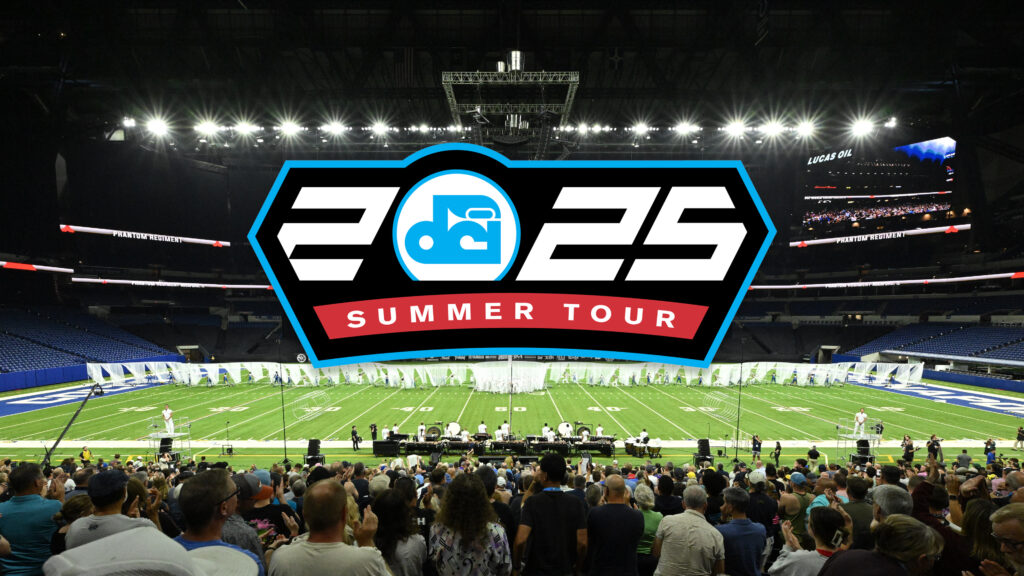One of the wonderful side benefits of Drum Corps International holding its January meetings and workshops in Atlanta, was that a number of us were able to get over to the Georgia Dome and see the 2007 Honda Battle of the Bands. For those of you who saw the movie “Drumline,” this is the event that was the climax of the movie. However, in real life, the Battle is non-competitive.
Ten bands from the Historic Black Colleges and Universities (HBCU) participated in this year’s event, based on voting and an attempt by the HBCU to give as many of its dozens of member organizations a chance to participate over the years. This year’s event included Alabama State University, Albany State University, Bethune-Cookman College, Central State University, Clark Atlanta University, Langston University, Norfolk State University, North Carolina Central University, Prairie View A & M University and Virginia State University. Alternate bands played to alternate sides of the stadium.

Some 60,000 fans seated on all sides of the stadium contributed to the Georgia Dome being sold out. In addition to the performing bands, there was a running theme throughout the event of “old school” versus “new school,” with DJs from both “sides” throwing down their best at turntables and other equipment between bands to provide live mixes for the thousands to dance to and register their approval with their applause.
This was an intriguing parallel to the “old school” and “new school” styles as exemplified by the various bands, some being quite traditional in their approach and others appearing to be influenced by current developments in the marching arts that we corps fans would recognize.
But the “old school/new school” dichotomy isn’t all the different from what drum corps is currently experiencing, with some advocating certain new developments and instruments and others promoting an approach that stays pure to certain historical parameters. Each side believes fervently that its vision is essential to take drum corps through the 21st Century.
At the Honda Battle of the Bands, the old and new peacefully coexisted and it was apparent that fans were enthusiastic about sharing their love and joy with those on the field and in the stands, all embracing in a great figurative group hug. And to that end, the fans of the HBCU and Drum Corps International activities share a mutual camaraderie.
Inescapable to us drum corps fans was the intensity of the degree of enthusiasm that the audience reacted to the bands on the field. Often, the fans were part of the show itself, dancing to the music, waving their arms and yelling their approval for all the bands. There appeared to be a sense of ownership of the shows that allowed the fans to become one with the performing bands. It was impossible to not feel the spirit from the fans being given back to the band on field at the moment.
There was a unity of purpose among all the performing bands, one of sheer and unabashed entertainment. Each ensemble was playing just for the audience, unlike drum corps, where the judges with the scores sheets must be taken into consideration.
Clearly, there is a difference in musical cultures at play here. Both the HBCU bands and Drum Corps International corps work hard to provide great experiences for their members and the public. But there is something at play with the HBCU bands that is perhaps difficult to quantify. I couldn’t help but feel that what I was witnessing had less to do with a conscientious attempt to make music and more to do with the pure, simple joy of expressing one’s musical gift.
Many years ago, I read a book titled, “How Musical is Man?” It was about how certain cultures express music as part of their daily life and culture. But they don’t consider what they do throughout their day as making music in the sense that western cultures do. They regard it as just part of life. Take away what we would call their music and you might as well take away their life.
I was reminded of that while watching these bands entertain the socks off the audience members in the Georgia Dome. What I was witnessing wasn’t about the score, or the placement, or bragging rights. It was about expressing the joy of life and bringing the audience into the expression, breaking down barriers that separate those making the music and those witnessing it.
I’m not saying that drum corps should throw away the score sheets and just attempt to connect spiritually with the fans. We are, after all, a competitive activity.
However, there is much we can learn from looking at the successes of those who can sell out an entire stadium—even filling up the end zones—to hear, see, witness, enjoy, appreciate and in essence become part of the production delivered by those performing bands.

Michael Boo was a member of the Cavaliers from 1975-1977. He has written about the drum corps activity for more than a quarter century and serves as a staff writer for various Drum Corps International print and Web projects. Boo has written for numerous other publications and has published an honors-winning book on the history of figure skating.
As an accomplished composer, Boo holds a bachelor’s degree in music education and a master’s degree in music theory and composition. He resides in Chesterton, Ind.





